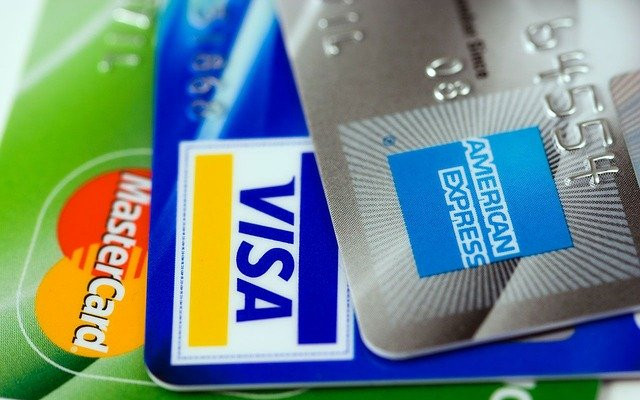How To Increase Your Cash Flow.
With the current events and chaos about the COVID-19 and economic downturn, many American families are struggling to make ends meet. There could not have been a better time for people to evaluate their family’s cash flow and find more ways to increase their cash flow during this devastating moment in our country’s history. Personal Cashflow management is a boring thing to do for many people. Do you agree with me?
The Importance Of Personal Cash Flow.
Most people cannot get ahead financially because every month, they have bills to pay. They have phone bills, tax bills, electric bills, gas bills, credit card bills, food bills, and so forth. Every month, most people pay everyone else first and pay themselves last, if they have anything left over. Hence, most people violate the golden rule of personal finance, which is, “Pay yourself first.”
The primary reason most people have money problems is, they were never educated in the science of cash flow management. Many Americans were educated on how to read, write, drive cars, and swim, but they weren’t taught how to manage their cash flow. Without this education, they wind up having money problems, then work harder believing that more money will solve the problem.
This post contains affiliate links. Please please read my Disclaimer for more information.
To save towards your goals, you need to have enough money available with you for investments, and for that too, cash flow understanding is a must. If there’s not enough money then either you have to rework your goals or have to generate enough surplus by following a budgeting technique and both involve personal cash flow understanding. Proper cash flow management begins with knowing the difference between an asset and a liability.
Ways To Improve Personal Cash Flow.
- Cash Inflow – This refers to cash that flows from another party to your assets
- The income you earn from your job, your side hustles like tuition, a weekend job
- Cash flow from your savings deposit, stocks, bonds, business, and properties
- Reimbursements from your employers, friends to who you lend money.
- Gifts received as cash.
- Cash Outflow – This refers to cash that flows from your assets to another party’s accounts.
- Your spending on your family, yourself.
- The money you lent to friends and family.
- Net Cash Flow – This refers to the aggregate of your cash inflow minus cash outflow. If your net cash flow is positive, it’s a good situation to be in. If your net cash flow is negative, there are some personal money management problems there that you need to resolve.
How To Reduce And Eliminate Your Personal Debt.
You should pay off credit card debts, car loans, college loans, and any other loans you might have so the only debt you have left is your home mortgage. Why do we make an exception for home mortgages? Because buying a home is so expensive that most people find it impossible to own a home without first getting a long-term loan from a financial institution.
Your home is also an investment over the long term, so there is good justification for owning rather than renting for so many years. But all other debt besides your home mortgage is manageable – and should be managed aggressively.
Your first priority should be to eliminate debt so you can start your investment program with a clean slate. Your second priority should be to build up a small reserve of cash to fall back on in case of an emergency. Once those two priorities have been met, you’re ready to begin investing in earnest for early retirement.
Live Below Your Means.
Learning to live below your means is crucial if you want to increase your cash. To achieve financial independence you need to build capital, and the only way to do that (without help from an outside source) is to make more than you spend.
The gap between making and spending has to be big enough that you can put a significant amount of money aside every month, year in and year out, for the sole purpose of investing.
One way to increase the make-spend gap is to increase your salary – which is why we suggest you invest in yourself first. The other is to alter your spending habits until you are living well below your means. To achieve financial independence, most people need to tackle the problem from both ends – making more and spending less.
This two-pronged approach gives you the best chance of widening the gap dramatically enough to make a real difference. We’ve already discussed the importance of investing in yourself first, so let’s move on to the other side of the equation, spending less.
Make A Long-Term Investment Plan.
Set a long-term financial goal for where you want to be in 5 years and a smaller, short-term financial goal for where you want to be in 12 months. (The smaller financial goal is a stepping stone along the way to your 5-year goal.) Set goals that are realistic and attainable.
When making a long-term investment plan it helps to be able to clearly state your goal so there is no confusion about where you are heading. For example: “I want to retire in 15 years and have a nest egg of $1.5 million in order to generate $60,000 in income annually.”
To be able to put together a goal statement like this you need to work backward, in essence, and complete three steps:
1. Estimate your yearly income needs once you retire.
2. Calculate your nest egg based on these yearly income needs.
3. Put together a detailed plan outlining how many years it will take to save up your nest egg and how much you’ll need to invest each year.
If you have been actively working for a while now, you may already have an initial sense of the number of years until your target retirement date, but completing this step will help you refine that understanding. By the end of it, you’ll have a much better grasp of how much you’ll need to invest each year to accomplish your goal in the desired number of years.
Increasing Your Cash Flow Is A Decision.
Pay yourself first. Put aside a set percentage from each paycheck or each payment you receive from other sources. Deposit that money into an investment savings account. Once your money goes into the account, and never take it out until you are ready to invest it.
Automating your payments makes it far more likely you won’t skip out on a payment to yourself. It forces your hand in a way, which isn’t all bad when you consider how many other things in life are calling out for you to spend money on them.
The siren call of spending is a little easier to resist if you tie yourself to the mast like Odysseus and give yourself no other choice but to stay the course.
That said, be sure to leave yourself a little buffer when you select your monthly investment amount so you aren’t pushing right up against the limits of what you can handle financially.
Better to select a smaller amount you know you can manage month in and month out than to push too hard and find yourself strapped for cash in any given month.
Consistency is your goal, not stress, and financial hardship. Let your monthly contribution to your future be a positive aspect of your life, something you can feel good about, rather than a negative burden that puts a strain on your existence. You have to start building a realistic budget and cut down on your spending to manage your cash flow and liabilities. It may seem simple, but paying closer attention to your finances could be what will drive you to new hope for a financially free life.
“If you have any feedback about how to increase the cash flow that you have tried out or any questions about the ones that I have recommended, please leave your comments below!”
NB: The purpose of this website is to provide a general understanding of personal finance, basic financial concepts, and information. It’s not intended to advise on tax, insurance, investment, or any product and service. Since each of us has our own unique situation, you should have all the appropriate information to understand and make the right decision to fit with your needs and your financial goals. I hope that you will succeed in building your financial future.
* Saving Your Future ( www.worldsystembuilder.com).









